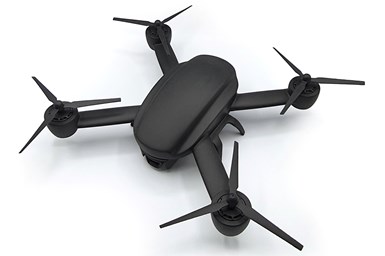CRP Technology’s Windform SL Is Lightweight, Rigid Composite for SLS, LPBF
Windform SL is well suited for the the production of sophisticated, efficient components across various fields, from aerospace to automotive, ensuring light weight without the need to reduce thickness.
Windform SL can be used to create lightweight, rigid parts without the need to reduce thickness. Source: CRP Technology
CRP Technology has added Windform SL to its Windform Top-Line series for additive manufacturing (AM). Windform SL is a polyamide-based composite reinforced with carbon fibers, which combines exceptional lightweight characteristics with a low density of 0.87 g/cc, making it an ultralight and rigid material.
The material is designed for use with laser powder bed fusion (LPBF) and selective laser sintering (SLS) professional 3D printing. As the twelfth addition to the Windform Top-Line range, the company says Windform SL marks a significant leap forward in the AM industry.
The material is a black polyamide-based composite reinforced with carbon fibers, making it exceptionally light, as indicated by the “SL” designation which stands for "Super Light.”
The market debut of Windform SL is occurring just a few months after the introduction of CRP Technology's second elastomeric material (Windform TPU) and eleventh addition to the Top-Line range, further illustrating the company’s commitment to innovation for 3D printing.
“Our commitment to advancement is resolute. We are an historic, pioneering company continuously innovating, creating top-of-the-line materials for professional 3D printing, and Windform SL is the latest proof, a further step forward in our growth journey that keeps us at the forefront of the industry,” says Franco Cevolini, CEO and technical director of CRP Technology. “As a leading 3D printing service provider, I am confident that this material will swiftly become the winning choice for many UAV and automotive customers relying on our 3D printing department for the of their advanced parts.”
Windform SL is well-suited for producing functional prototypes and components in the unmanned aerial vehicles (UAV) and unmanned aerial systems (UAS) sectors, and applications demanding a balance of lightness, stiffness and thermal resistance.
The heat deflection temperature (HDT) at 1.82 MPa of 182.5°C, combined with high values of specific tensils modulus, specific tensile strength and impact strength (Charpy and Izod), are among the key features of Windform SL. These characteristics enable it the material to maintain structural stability under intense stress, even at elevated temperatures, ensuring reliable performance in demanding environments.
The postprocess surface finish is equally noteworthy, with Ra values of 5.44 µm after the SLS process, 1.56 µm after manual finishing and 0.83 µm after CNC processing, ensuring smooth and precise surfaces.
Windform SL is an advanced solution for the future of professional 3D printing. With broad applications in the UAV sector and beyond, Windform SL can revolutionize the production of sophisticated and efficient components across various fields, from aerospace to automotive, ensuring light weight without the need to reduce thickness.
Related Content
-
New Zeda Additive Manufacturing Factory in Ohio Will Serve Medical, Military and Aerospace Production
Site providing laser powder bed fusion as well as machining and other postprocessing will open in late 2023, and will employ over 100. Chief technology officer Greg Morris sees economic and personnel advantages of serving different markets from a single AM facility.
-
Two 12-Laser AM Machines at Collins Aerospace: Here Is How They Are Being Used
With this additive manufacturing capacity, one room of the Collins Iowa facility performs the work previously requiring a supply chain. Production yield will nearly double, and lead times will be more than 80% shorter.
-
3D Printed Lattice for Mars Sample Return Crash Landing: The Cool Parts Show Bonus
NASA Jet Propulsion Laboratory employs laser powder bed fusion additive manufacturing plus chemical etching to create strong, lightweight lattice structures optimized to protect rock samples from Mars during their violent arrival on earth.















